The visit comes almost a year after construction started on GLASGOW, the first Type 26 Frigate.
The visit also comes not long after the announcement by the Australian Government that the nine anti-submarine Hunter Class frigates will be based on the UK’s Type 26 design and will be built in Australia for the Royal Australian Navy. During the visit the UK Defence Secretary and Minister Payne viewed the first ten units of GLASGOW, which are being integrated to form the hull and main machinery spaces.
BAE Systems has also announced that the value of the contracts placed with UK and international suppliers for the first three contracted UK Type 26 frigates now totals in excess of £1bn.
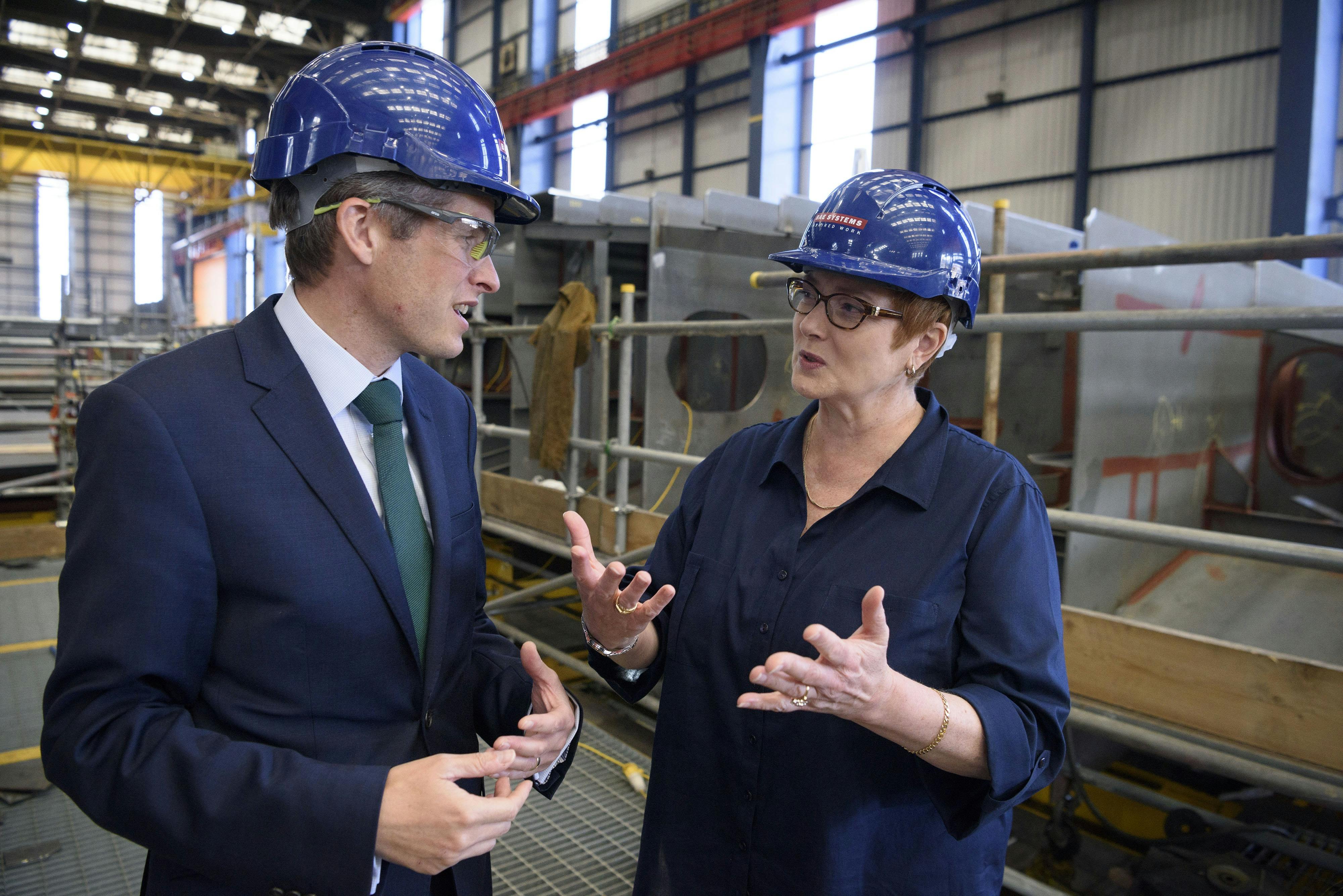
Over 80% of the total equipment spend on the first three ships of the UK programme has now been committed to the supply chain say the company.
“Over 80 companies are contracted to design and manufacture equipment for the first three ships, of which over 60 are based in the UK, supporting more than 4000 jobs in total.”
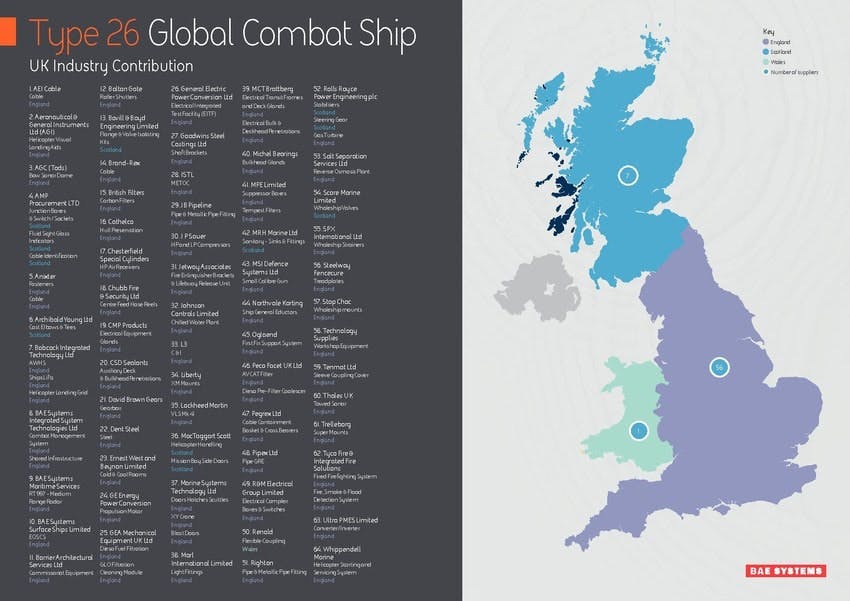
BAE Systems Chief Executive Charles Woodburn said;
“Australia’s selection of the Type 26 Combat Ship for its Future Frigates programme reflects the world-leading anti-submarine warfare capabilities these ships will deliver to the UK and to the Commonwealth.
In the 12 months since cutting steel on the first of the UK ships, we have committed more than £1 billion with supply chain companies, large and small – vital partners in delivering cutting edge capability to the Royal Navy, supporting thousands of jobs and contributing to national prosperity.
Our recent success on the Australian Future Frigate programme will not only deliver huge benefits for Australia, supporting jobs, local industry and sovereign capability – it will also generate opportunities for companies in our UK supply chain.”
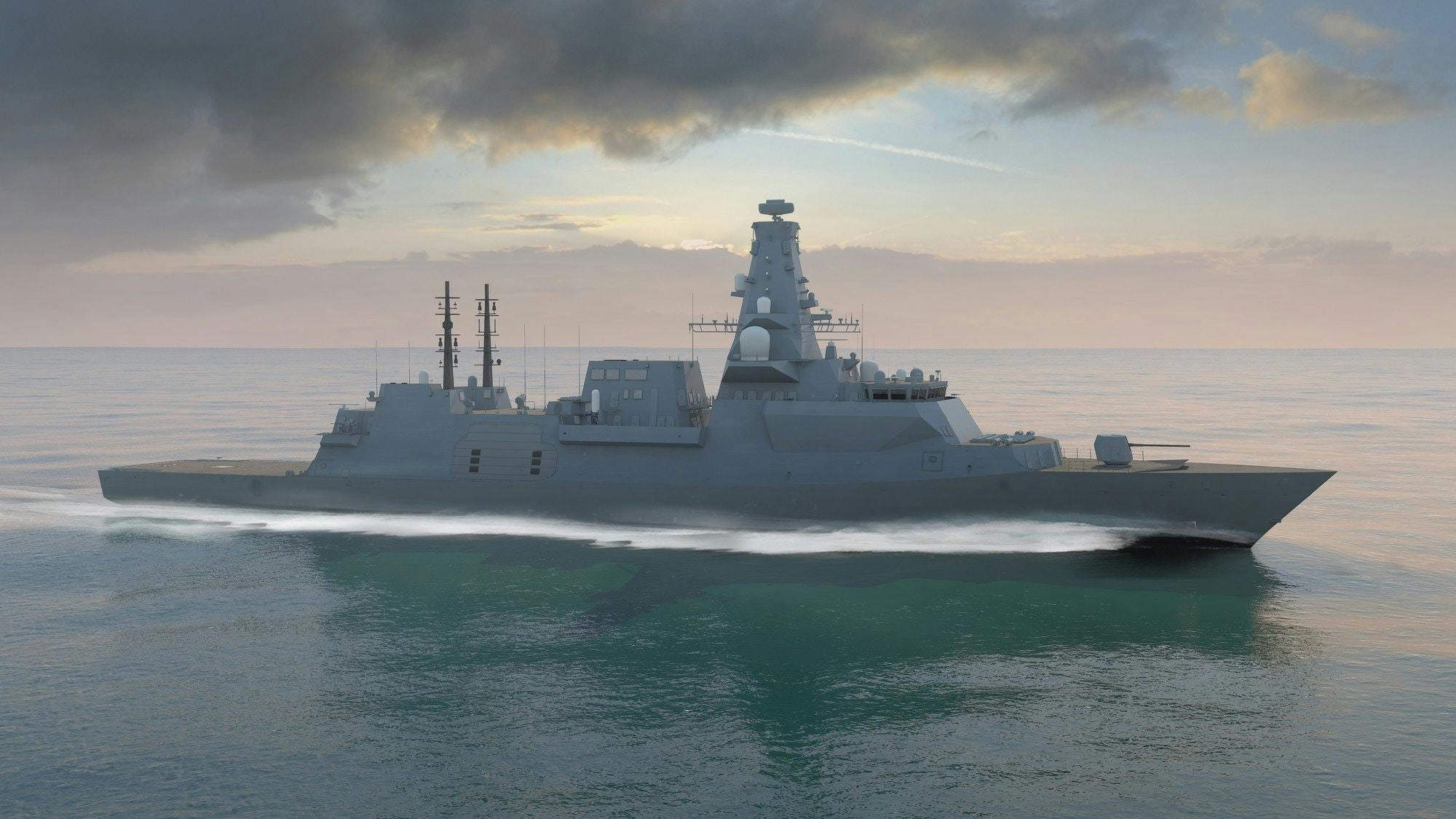
Defence Secretary Gavin Williamson said:
“This renaissance in British shipbuilding is great news for our major yards, but also for the whole defence industry, with millions being injected into so many businesses, both big and small, supporting and supplying our world-class warships. The Type 26 supply chain has now seen investment worth over £1 billion, and many of the businesses involved are now perfectly placed to benefit from Australia’s £20 billion build.”
BAE say that the Global Combat Ship will be a world-class anti-submarine warfare ship, which is globally deployable and capable of undertaking a wide range of roles from high intensity warfare to humanitarian assistance, either operating independently or as part of a task group.
The UK Type 26 will replace the Royal Navy’s existing Type 23 anti-submarine warfare ships, with the first of class expected to enter service in the mid-2020s. The Australian Future Frigate will be built in Australia over the next two decades, to replace the Anzac frigates with the first of class expected to enter service in the late 2020s.


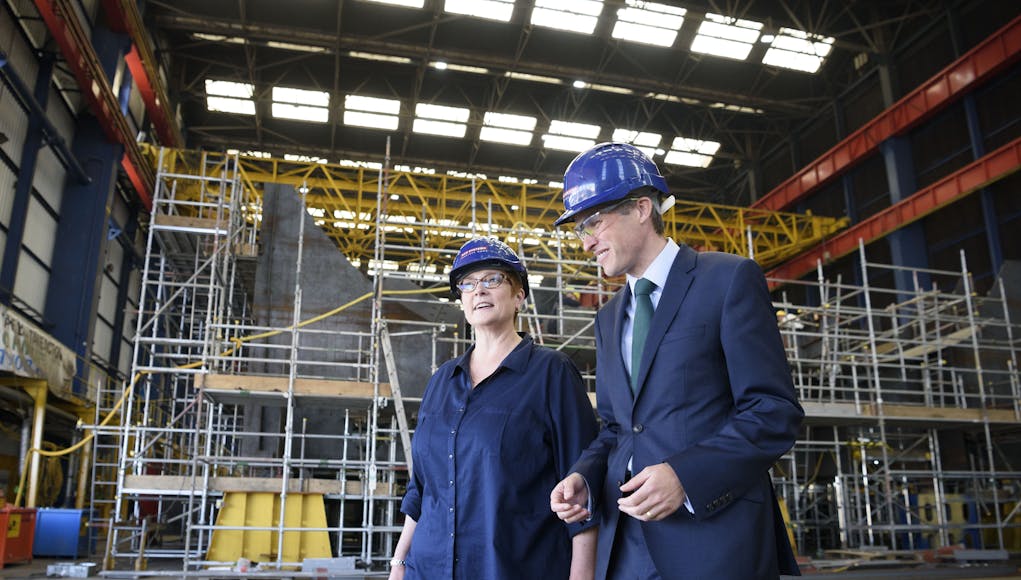






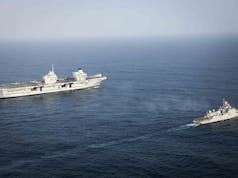
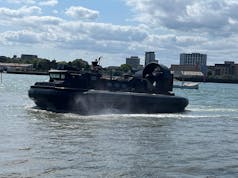



This is really shaping up, brilliantly managed this and the t31e could become the backbone of navies all over the world.
I wish we had a sub for export.
we have survey and recommission the retired trafalgars and use the money to build another t45. my son was on torbay and tells me the trafalgars have plenty of service left in them, but the tecno snobs at the admiralty has astute blinkers on.
Andy we do BMT have a host of AIP small conventional subs in the 500-1200 ton category and these vessels could be built for the Royal navy in the 250-300 million price bracket. The type 31 equivalent for undersea warfare. Royal navy could do with 4-6 of these subs to screen the nuclear deterrent, shadow enemy vessels in shallow waters, blockade ports, special forces launch platform and to train up submarine crews before graduating to the Ocean going astutes do Dreadnought/ vanguard classes.
Time the RN got back into the conventional powered submarine game.
I agree, it’s a gap in capability – and numbers. Effectively 4 for the price of 1 Astute, but it would need to be in addition to the Astutes, not instead of any. Crews could be a problem, but if that could be solved, a fleet of 8 would be a very worthwhile addition to the RN.
Of course, another half revolutionary idea would be this. If you have 6 countries having 4 conventional boats each, you’re getting in total maybe 6 to 10 operational at any one time in total. But if you had a pool of 24 boats between the 6 countries, sharing repair, maintenance and refits, specially the workers and transportable equipment, you could maybe get 12 to 16 operational in total, just move the boats around between navies. Saving one-third to a half of the overall budget.
Yeah, I know, politics and rivalry. Oh well.
Sorry, that’s far too sensible an idea. You’ll never succeed in politics.
The Royal Navy needs to buy about 5 Wyverns, if our own Navy doesn’t have confidence in them then no one else will. They will also make a valuable addition to the Navy in their own right. This is where any additional spending for the Navy should go.
a south korean conventional submarine during an exercise off north korea recently pierced an entire carrier escort group defence screen and got close enough to have sunk a carrier. it then slunk away, and the yanks didn’t know it had even happened.
That has been happening for years, The horrible death trap useless Collins class submarines have been building up a bloody long kill chain against the USN for 2 decades now including Carriers, Amphibious assault ships, Cruisers, Hand full of attack submarines and plenty of there Burkes and Frigates when they still had them.
The time is fast approaching when we are going to need these built and in the water.
Updating our current warships shorterm with Mk 41 VSL might be a very wise move indeed!
https://www.theguardian.com/world/2018/jul/21/south-china-sea-uk-could-send-aircraft-carrier-to-back-australian-vessels
The Type 26 is looking like it could be a good project, the Canadians are also looking for 10-15 new frigates,I wonder if BAE could also get that project.
But one major project area that is being overlooked at the moment America. I am already hearing complaints from that side of the pond. The Americans are looking for a new frigate, yes the Italians, have offered their FREMMs and American companies are also making offers but these are coming into the 800-900 million dollar(£600-700milion) range. Something that the USN does not want. This starts to come into the destroyer price bracket.
What they are after is a ship that is cheap and cheerful, can operate on its on in a low to medium risk environment, with a realistic ASW or AAW capability, blue water capable and can be used for patrol or as an escort. They do not want a 7000 ton high end ship but one that can be built quickly probably in the 4000 tons range, basically an Oliver Hazard Perry replacement.
SOUND FAMILIAR.
It seems that they are looking at a Type 31 concept.
So depending on how realistic the US are about this type of vessel then maybe we should get together and design a basic vessel meeting the requirements of both the RN and USN with the bolt on’s specific to each nation. That would lower the design and production costs of the ship and powerplant with radar/electronic suite and weapons outfit as bolt on.
The US has not built low-medium cost frigates in decades and in many cases the requirements of both the RN and USN overlap. If the US is real about getting these ships into service quickly then why not approach them and ask if they would like to work on a combined design, it would mean a production run of about 45 frigates for both nations. However I think that if the RN and USN was to have a single light frigate vessel then international orders would also flow. This also then means that the tooling and subcontracts would be cheaper, design costs could be a 50-50 split meaning that construction would then also be a 50-50 split. Good for both nations, slightly better for the UK. The Babcock Arrowhead concept could appeal to the USN as it has the space for additional equipment and weapons if needed.
The Italian FREEMS is a good vessel but comes into the high end bracket where the USN is looking for hull numbers with a low-medium independent operational risk threat capability.
(Chris H) Ron – You nail the errors in the American way of procuring their Frigates. Their error was to only accept bids from manufacturers with ships already in the water. What a dumb idea – They are basically building in obsolescence before a plate is welded and precluding the latest hull and ship designs. This is totally contrary to every other US naval ship specification. Zumwalt anyone? This precluded the Type 26 and BAE either by design or by stupidity.
I have to say Type 31 is way too unknown given the tendering process is underway, too small and would not fulfill the needs as specified by the US Navy itself. 7,000 tons is where we are in advanced ASW / AAW Frigate design. Maybe its Destroyers that are now too small ??
One read the US Navy’s specifically NAVSEA’s own statements. The contract is specifically stated for 800-950 million US dollars. The requirement for a in service design is meant to insure the design is able to be put into the yard quickly and without the USN having to pay the cost of troubleshooting the design. So someone else can mooch off the the Navy budget.
Second as for obsolescence the USN has long taken the view that there is nothing refits cannot fix (hence American ships having up to 50yr service lives).
Third where you somehow get the idea that the requirements for a in the water ship (which really meant nearing completion) was targeted at BAE I do not know. NAVSEA didn’t sit on the Type 26 design for years without committing to build that was Fallon and earlier Hammond dragging his heels. Not some giant conspiracy from America but simple incompetence on the part of the MOD in the UK.
Fourth using Zumwalt as an example? That is example of a program the Navy did not want so ended up using it as a colossally expensive experiment.
You both could not be more wrong about the USN’s requirements for the FFG(X) program.
I suggest you spend some time doing some basic research before coming on here and writing rubbish.
From what I have read the FFG X has a hard budget cap of 950million dollars ( 2018 equivalent ), and the requirement for already developed hulls is not so much about de risking development costs as making sure steel can be cut in 2020, they want these ships and are not willing to wait.
$950 is the cap and $800 is the minimum amount the Navy thinks it could be done for. So if a bidder submitted for less their bid would be considered with skepticism.
The in service requirement is both due to contain the cost growth of a new program and the relatively short build lead time.
1 to laid down in 2020 then 2 every following year until planned 20 are built. The Navy has speculated about increasing the numbers beyond the initial 20. However I think that would depend on the progress of the USN’s Future Surface Combatant program and whether money would be available to sustain that procurement rate for FFGs in addition to introducing a new DDG/CG (they haven’t decided how big yet) simultaneously.